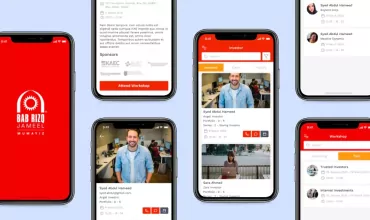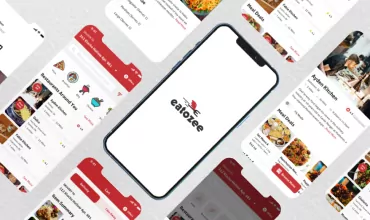MALM Insight – A Guide For a Succesful Mobile Application Lifecycle Management For Enteprises

Table of Contents
Mobile devices are rapidly making inroads in enterprises and the app development has also taken huge leaps. They have become the mainstay for adoption of mobile devices in enterprises. Mobile applications are already accountable for performing critical business operations. EMA (Enterprise Mobile App) is heading towards a tremendous growth. Since the beginning of 2013, the app adoption in enterprises has experienced a steep rise.

In the first quarter of 2013, it has been observed that nearly 63% of the best-in-class or top performing organizations have a well defined MSI (Mobile Software Initiative is a program to develop or deploy an application within the organization for performing business operations). This is nearly 36% more than the combined numbers from other respondents.
Our research considered three performance criteria to evaluate and classify the best-in-class, average and laggard organization as of April 2013.
- 85% achievement in accessing critical business information in a limited time-frame
- 54% of the daily worload completed on mobile devices
- 38% improvement in operational efficiency
Best-in-class: top 18% of all performers
Industry average: 48% of performers
Laggards: 28% of performers
All others: Industry average + Laggards
Mobility is compelling organizations to make a move. Organizations are already developing applications that strengthens their business, brings uniformity and keeps them competitive. However, most of them are failing to function as a mobile app production companies. This research provides and in-depth analysis of the current business scenario and accountability of applications in enterprises. It also highlights the key maneuvers required to master the art of MALM (Mobile Application Lifecycle Management).
Developing an understanding of the EMAL (Enterprise Mobile App Lifecycle)
The research from the first quarter of 2013 reveals that all respondents (best-in-class, industry average and laggards)those are using MSI to carry business operations have realised benefits in various layers of their business. The benefits are more in comparison to enterprises without MSI.

The MSI that delivers custom mobile apps for enterprises have earned the reputation of meeting the specific business needs. This is in contrast with off the rack applications that do not support some of the business processes. A well-integrated and rich in feature applications are compelling many organizations to adopt custom apps in the virtuous cycle. The number of organizations getting custom mobile apps is on the rise so is the number of apps developed by each organization. Annually, the number of apps developed by each organizations is growing at an average of nearly 39%.

Confronting to mobile app’s challenges
The growing governance of mobile in enterprises is being confronted with numerous challenges. When respondents were surveyed for MSI implementation, most of them raised their concerns for the security and lack of standardization of the mobile platform.

Though, end-to-end data encryption, mobile app security and blacklisting have notably increased, security still remains a bottleneck for nearly 61% respondents. The initiatives taken to address the security concerns are not sufficient to overcome challenges. Nearly 44% respondents considered lack of standardization of the mobile platform as another challenge. The availability of a wide array of devices and technologies engulf their mobility initiatives. They are often left in the conundrum of the device type (tablet, smartphone, or wearable), OS (iOS, Android, BlackBerry, Windows), version of the OS and the nature of applications (hybrid, native or HTML).
In addition to the above mentioned dilemmas, respondents are also confronted with the limitation of the development skills. The application development requires a holistic approach. However, enterprises are failing to find skilled app developers to comply with the assorted mobile app landscape.

Data assimilation
One of the compelling reasons to adopt mobility in enterprises is the possibility of integrating critical business data in mobile applications and making it accessible at different organization levels. This helps the decision makers to take an informed decision based on the real-time information. Enterprises those have already incorporated business data with mobile apps have observed tangible benefits. They have experienced improvement in CRM (Customer Relationship Management), content management, social collaboration and the ability to deliver critical business information in a limited time frame.

Nevertheless, the initiatives of organizations are being held back because of the complexities associated with mobile apps. They often fail to effectively integrate the data online and offline. Scalability issues are also hindering the initiatives. But, the development companies are well aware of the development complexities.
As businesses have realized the necessity of app for organizations, they seriously lack development skills, product management, quality assurance, data integration and compliance integration. In the quest of acquiring mobile strategy, businesses are falling short of a robust methodology that ensures successful development and deployment of mobile applications. In order to harness the power of mobility businesses are recommended a full-lifecycle approach.
Understanding MALM (Mobile Application Life-cycle Management)
Our research has identified 7 phases in MALM. These are –
- Identify – Identify the important components such as people (customer and employees), process (operations and task), technology (systems and assets) and the business requirements.
- Specify – Define the app requirement; specify the nature of the app (custom or ready-made). Determine whether to buy, develop or integrate and identify the mobile app.
- Develop or Acquire – Specify the target development environment; integrate and sync with the backend data, quality control and test.
- Secure – Limit the data access and identify the audience to access the app and data.
- Install – Select the mode of distribution and accordingly fulfill and monitor
- Manage – Control the app usage, track, monitor and enforce compliance policies
- End-of-life – Identify applications those are no longer in use and maintain a log of the whitelist and blacklist app.
The process is cyclical, which includes existing apps, subsequent versions and the new apps overlapping the previous versions.

When MALM is combined with a flexible software development environment, it further becomes iterative and never-ending. As new applications keep coming, the old applications are shutdown when the app is no longer useful to the enterprise. Organizations largely fail to comprehensively fulfill the above mentioned phases of MALM. As a result, they become the victim of their own initiatives.
Enterprises looking to invest on MSIs must calculate the risk, challenges, benefits and the approach to accommodate these realities: Diverse OS environments with different OS versions, variety of app development model and frameworks, data assets and diverse developer skills sets. This demands apps that precisely fulfill the business requirements and bolster the business processes. A flexible approach can be a perfect alternative to address the above mentioned vital phases of MALM.
The open platform approach – addressing key business concerns
The open platform can accommodate modification, addition, alteration of features without manipulating the source code of the platform. An open platform is defined by its open-standard based APIs (Application Programming Interface). With the help of this open standard, the developer can easily customize applications as per the requirement.
The open app development platform promotes the development using the development framework without hindering the security, modularity and control. Skilled developers can utilize the capabilities of the open platform and use different development tools, integrate data, and control the development process. The reusability, standardization and modularity, reduce the development cost and supports faster marketing time.

The figure shown above clearly depicts that best-in-class and industry average respondents prefer open app development platform while laggards are not utilizing the capabilities of the open platform development. This justifies that the open platform development approach is clearly gaining popularity and is being preferred by enterprises.
Key learning from the platform evaluation criteria of MALM
Enterprises looking to incorporate the best practices of MALM should look for a mobile app development lifecycle solution with a modular, open architecture that includes the following essential features:
- Scalable infrastructure to accommodate small to large or large to small project requirements
- Repeatable components that can be utilized across multiple apps and workflows
- Open standards-based well documented APIs for hassle free integration
- Flexible workflows that support an array of developer tools
- Back-end data integration for major enterprise data systems and softwares
- Integral identity management for selective authorization and user authentication
- Wireless data synchronization with off-line caching
- Integral security for apps and encryption for the data
- Full-lifecycle app provisioning, governance and management
On mastering the different phases of MALM, enterprise can successfully deploy and distribute apps to employees, customers and business partners. This will ensure good ROI, boost productivity, streamline business processes and improve operational efficiency.



